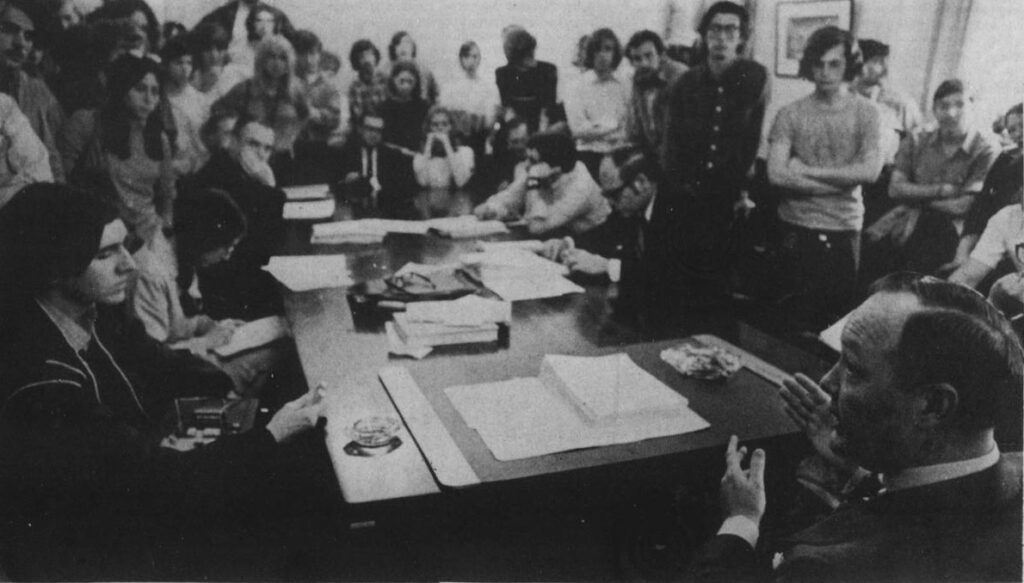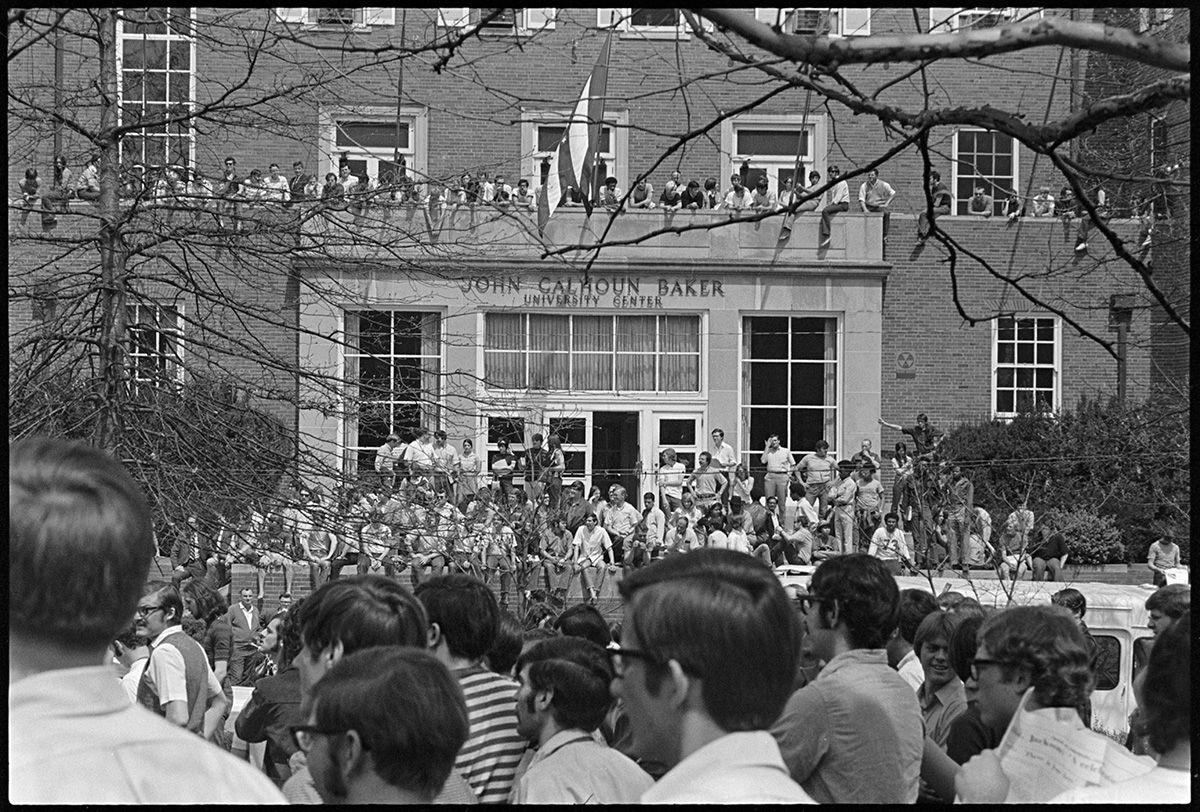By John Higgins, BA ’23, History and Political Science, Student Assistant, Digital Initiatives
Read other posts from this series which recounts the spring 1970 student demonstrations at Ohio University and the administrative response, as documented in campus security reports from the time period.
For Ohio University, the month of April was considerably quieter than the impending storm that was to come in May. April 23rd started off slow as a group of students organized on the College Green around the Civil War Soldiers’ and Sailors’ Monument at 12:30 p.m. As the group splintered in different directions, university officials diligently attempted to predict the students’ next move in their established “control center” in Cutler Hall. This proved to be an easy task for the university as they had instructed staff and officers to attend the rally in student clothing. Nonetheless, Carnegie Hall (AKA Scripps Hall, former home of the R.O.T.C.) was alerted by officials to be prepared.
The time was now 1:35 p.m., packs of students headed toward both Copeland and Cutler halls with the intention of having their demands met. Room 13 of Copeland Hall filled with over one hundred students who were to meet the Vice President for Education Services and the Associate Dean of Faculties for a scheduled talk. Concurrently, the hallways and the Trustees’ room of Cutler Hall were packed full of 35 students, with more gathering outside the building. University officials in the control center were informed that their radio frequencies had been tapped. Upon failing to reach the President’s office via phone, it was discovered that the lines had been shut off. The sit-in finally ended at 4:05 p.m. when President Sowle agreed to meet with “interested students” at 12:00 p.m. the next day at Memorial Auditorium.

The meeting at Memorial Auditorium commenced on April 24th at 12:00 p.m. The discussion concerned issues such as the viability of having an R.O.T.C. program on campus and the continued disruption of classes that the university was experiencing. During this “great debate,” which included around 2,000 students who filled the bottom floor and balcony, campus security guards were sent to Cutler and Carnegie halls to monitor activity. Other officials and security staff attended the meeting in civilian clothing to monitor the crowd, specifically the “anti-R.O.T.C. Group.” The university was highly suspicious that these students had tapped into their radio frequencies after what happened the day before. As a result, phony messages were relayed by dispatchers over the radio. The first group departed the rally at 1:40 p.m., prompting a university official to lock the doors of the first floor of Cutler. Reports indicated the students were headed toward Carnegie, while their movements were being tailed by a Security Officer. The meeting slowly died out as more groups began to depart. Reports during the next hour focused on a group of students outside of Ewing and a broken window in Carnegie. At 2:32 p.m. the extra security staff were sent home, and the control center was closed.


On April 29th at 3:45 p.m., a control center was established when a meeting hosted by the Curriculum Council was overwhelmed by student protesters. This resulted in the meeting being moved to Ewing Auditorium for additional capacity. Reports came in indicating that there were around 150 individuals in attendance debating the merits of R.O.T.C. on campus. At 5:31 p.m. the Ohio State Highway Patrol notified Ohio University that they would be on their own if a student protest broke out as most of their officers had been sent to Columbus to assist with protest containment at Ohio State. To the relief of university officials, at 6:11 p.m. all turned quiet on the College Green. Everyone was sent home and the control center was closed for the evening.